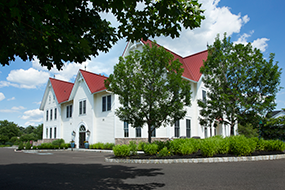Nothing is more challenging for a trial lawyer than to prove to a jury that his client is brain injured when she or he looks, and appears to act, perfectly normal. Broken bones can be seen on x-rays. Injuries to muscles, nerves and ligaments may not be seen on x-ray but can be observed with limping, deterioration of affected limbs, or tests of reduced range of motion and strength. Paralysis, amputations, scarring and disfigurement are easily observed. But a brain injury often cannot be seen.
Brain injuries often causes injury to nerves that carry signals from one part of the body to another. The brain has many tracts of bundled cables, like superhighways, that link regions of the brain. The bundled cables are made up of axons. These axons transmit signals from one nerve cell to another. Each tract has a predominant function.
- The corticospinal tract controls movement.
- The cingulated tract controls memory.
- The arcuate tract controls language.
When axons are injured, the communication between nerves in the same tract can be affected thereby effecting the normal functioning of that portion of brain activity.
Immediately after a head injury, a CT scan (which use x-rays to visualize blockages, bleeds, tumors and skull fractures) is used urgently because it is quick and relatively inexpensive compared to an MRI. An MRI uses radio waves to create more detailed images. A functional MRI measures activity by tracking blood flow. Neither of these tests can detect broken nerves or the loss of neurons.
Diffusion tensor imaging (DTI) is a newer type test that uses magnetic pulses to tag water molecules in the nerve cells of the brain and then records six characteristics of how these water molecules behave. But DTI is not yet widely used in diagnosis and treatment of brain injury and the software used in interpreting DTI cannot accurately determine each tracts direction if the axons from one tract intersects with axons of another tract.
Meanwhile, a ton of money is being put into indentifying and mapping all 40 major brain tracts. Treatment has been a national priority after our soldiers returning from wars in Iran and Afghanistan resulted in huge numbers of brain injury cases. Since 2007, the Department of Defense Combat Casualty Care Program has spent more than $700 million dollars on more than 500 TBI projects. One of those projects is the Human Connectome Project which is mapping neural networks.
By identifying neural pathways that are damaged, doctors will be able to eventually create treatment models which take advantage of the undamaged neural pathways to redirect traffic away from the damaged pathways. It will also allow victims to understand that they are not crazy, that symptoms are real, because the damage can be seen just like a broken bone.
Until then, trial lawyers must use the tools that are available to make a jury see that which medical science cannot yet allow us to see with our eyes. The testimony of caring physicians, the results available through neuropsychological exams and the testimony of family, co-workers and friends to compare the person who was before the injury, to the person who is now since.
Tony Baratta is a trial attorney in Huntingdon Valley, PA who represents clients who have been seriously injured. Tony is the founding partner of Baratta, Russell, & Baratta and a member of the Pennsylvania Brain Injury Association (BPIA). Tony is on the board for the Philadelphia VIP, a member of the Million Dollar Advocates Forum for trial attorneys and voted one of Philadelphia’s Super Lawyers 2008-2014.

